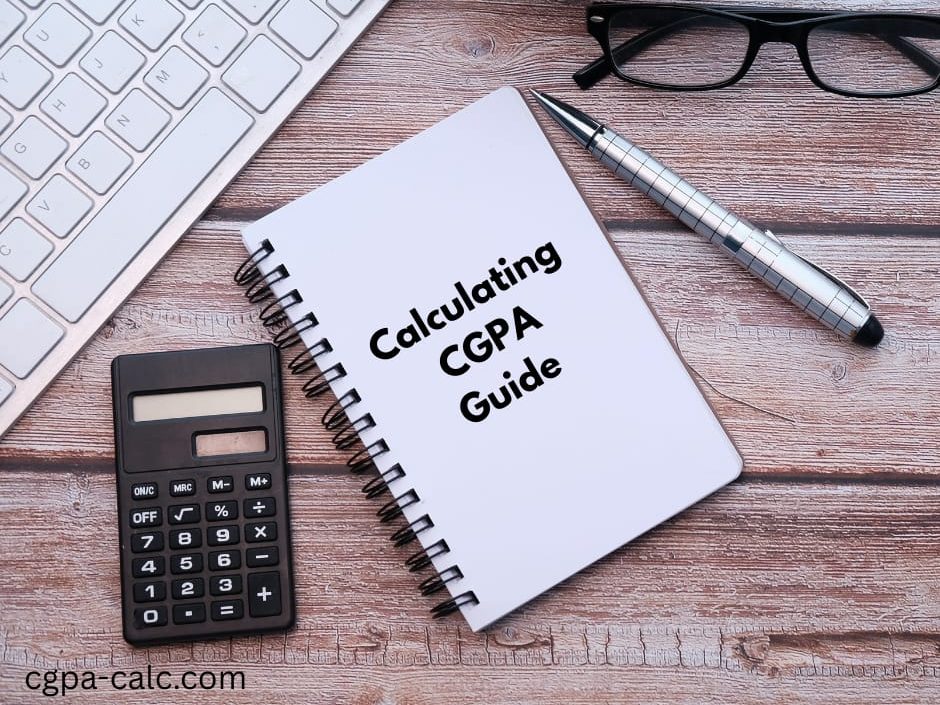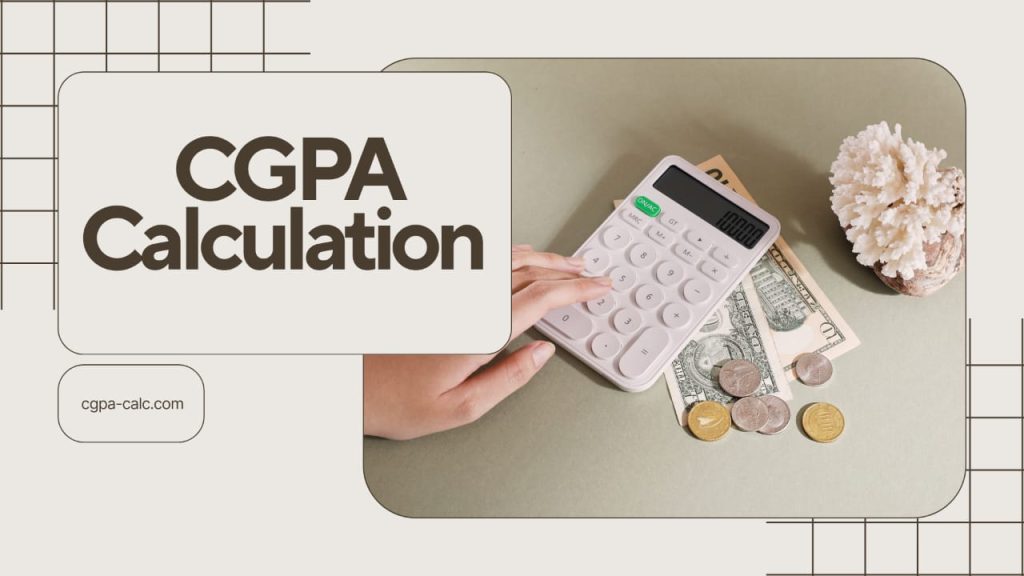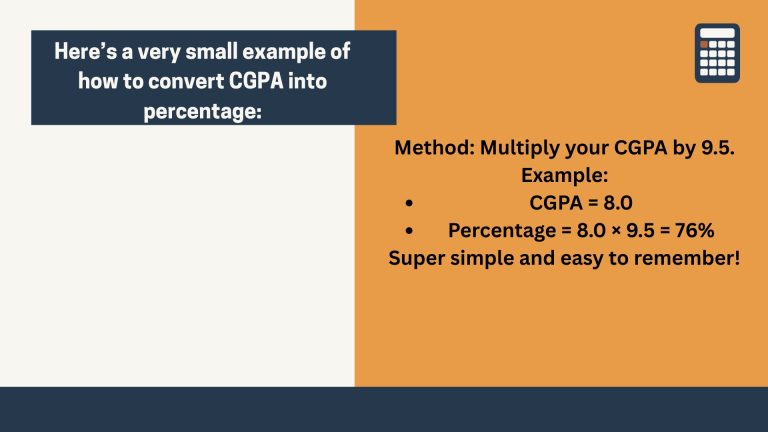How to Calculate Overall CGPA of All Semesters
Understanding Overall CGPA Calculation in Indian Education System
Calculating the overall CGPA of all semesters is crucial for Indian students pursuing undergraduate and postgraduate programs. The Cumulative Grade Point Average represents academic performance across all completed semesters. Understanding this calculation helps students track their progress effectively and plan their academic journey strategically.

What is Overall CGPA and Its Significance
Overall CGPA stands for the cumulative grade point average calculated from all semesters combined. This metric provides a comprehensive assessment of academic performance throughout the entire program duration. Indian universities use this system to evaluate student achievements consistently.
The cgpa of all semesters reflects weighted average performance considering credit hours assigned to different subjects. Core subjects typically carry higher credits than electives. Laboratory courses may have different credit allocations compared to theory subjects.
Academic institutions use overall CGPA for various purposes including scholarship eligibility, placement opportunities, and higher education admissions. Many employers specify minimum CGPA requirements for recruitment processes. Graduate schools evaluate applicants based on cumulative academic performance.
Indian CGPA Grading Standards
Most Indian universities follow a 10-point grading scale where grades range from O (Outstanding) to F (Fail). The cgpa and grades correlation helps students understand their performance levels. Each letter grade corresponds to specific grade points used in calculations.
The standard Indian grading system assigns: O = 10 points, A+ = 9 points, A = 8 points, B+ = 7 points, B = 6 points, C = 5 points, and F = 0 points. Some universities use variations of this scale with slight modifications.
Understanding cgpa and division classification helps students identify their academic standing. First division typically requires CGPA above 6.0, while distinction may require 7.5 or higher. The cgpa first division threshold varies across different universities and programs.
Consider Priya, an Engineering student who maintained consistent performance across eight semesters. By calculating her cgpa of all semesters regularly, she identified that her cumulative average of 8.2 qualified her for distinction and premium placement opportunities with leading technology companies.

Essential Features of Modern CGPA Calculation Tools
Contemporary academic management requires sophisticated digital solutions for accurate calculations. These platforms eliminate manual errors while providing comprehensive analysis capabilities. The cgpa of all semesters calculator offers various features supporting strategic academic planning.
Multi-Semester Integration Capabilities
Advanced calculation tools handle complex academic records spanning multiple years effectively. They accommodate varying credit structures across different semesters and programs. The total cgpa of all semesters calculation becomes straightforward with proper digital assistance.
Modern platforms allow students to input grades and credits from all completed semesters simultaneously. They automatically apply appropriate weightings based on credit hours. This comprehensive approach ensures accuracy in cumulative calculations.
Credit Hour Management Systems
Different subjects carry varying credit allocations reflecting their academic importance and intensity. Theory courses typically receive 3-4 credits while laboratory sessions may carry 1-2 credits. Major projects and thesis work often receive higher credit weightings.
The calculate cgpa of all semesters online process properly weights each subject based on assigned credits and earned grades. High-credit core subjects receive appropriate influence in overall calculations. This weighting accuracy becomes crucial for academic assessment.
Real-Time Performance Tracking
Digital platforms provide instant feedback on academic performance changes across semesters. Students can monitor improvement trends and identify areas needing attention. The aggregate cgpa of all semester tracking supports continuous academic improvement.
Take Rajesh’s approach to academic management during his BTech program. He used digital tracking tools to calculate average cgpa of all semesters after each term. This systematic monitoring helped him identify performance patterns and adjust study strategies, improving his cumulative average from 7.1 to 8.4 over four years.
Step-by-Step Process to Calculate Overall CGPA
Accurate calculation requires systematic methodology and careful attention to detail. Understanding the complete process enables students to verify results independently. Learning how to calculate cgpa of all semesters manually provides essential knowledge for academic planning.
Data Collection and Organization
Begin by gathering official academic documents from all completed semesters. Organize transcripts chronologically for systematic processing. Note any repeated subjects, transferred credits, or special academic circumstances affecting calculations.
Create comprehensive records listing each subject with corresponding grades and credit allocations. Verify credit hours match official university documentation. Double-check grade entries against original mark sheets and transcripts.
Credit Hour Weighting Process
The how to calculate cgpa of all semesters in college methodology involves multiplying each subject’s grade points by its credit hours. This creates weighted grade points that reflect each subject’s relative importance in the overall calculation.
For example, a 4-credit subject with A grade (8 points) contributes 32 weighted points. A 2-credit subject with B+ grade (7 points) contributes 14 weighted points. These weighted values accumulate across all semesters.
Mathematical Computation Method
Sum all weighted grade points from every completed semester. Calculate total credit hours attempted across the entire program. Divide cumulative weighted points by total credit hours for the final CGPA result.
The formula becomes: Overall CGPA = (Sum of all weighted grade points) ÷ (Sum of all credit hours). This calculation method ensures proper representation of academic performance across varying credit structures.
Verification and Quality Assurance
Perform multiple calculation rounds to ensure accuracy and consistency. Cross-check results with official university transcripts when available. Use digital tools for additional verification of complex computations involving multiple semesters.
Meera, a Commerce student, developed systematic verification procedures for her four-year degree program. She maintained detailed spreadsheets tracking how to calculate cgpa of all semesters in university standards. This approach helped her identify and correct calculation errors that could have affected graduate school applications.
Advanced Calculation Methods and Conversion Techniques
Academic applications often require different metric representations and format conversions. Students encounter situations requiring transformation between various assessment scales. Understanding these processes ensures accurate presentation across educational and professional contexts.
SGPA to Overall CGPA Conversion
Many students need to calculate overall cgpa of all semesters from sgpa values. Each semester’s SGPA must be weighted by its total credit hours for accurate cumulative calculation. The how to calculate overall cgpa from sgpa process requires systematic credit weighting.
Individual semester contributions depend on their credit loads relative to overall coursework. Semesters with higher credit hours naturally influence cumulative averages more significantly. Proper weighting ensures accurate representation of academic effort.
Percentage Conversion Methods
Various applications require percentage representations of academic performance. The cgpa to percentage of all semesters conversion typically uses established formulas. The standard Indian conversion method: Percentage = (CGPA × 9.5) + 5.
Different universities may employ slightly varying conversion formulas. Some institutions use direct multiplication while others apply more complex calculations. Students should verify specific conversion requirements for their applications.
Grade Point to Division Classification
Understanding academic divisions helps students contextualize their performance levels. The cgpa for 1st division typically requires cumulative averages above 6.0 in most Indian universities. Higher divisions may require 7.5 or 8.0 CGPA thresholds.
The cgpa table classifications help students understand their academic standing. First class with distinction often requires CGPA above 7.5. Merit scholarships and honors recognition frequently depend on maintaining high cumulative averages.
Consider Suresh’s engineering program where he needed to calculate percentage from cgpa of all semesters for placement applications. Using the standard conversion formula, his 8.1 CGPA translated to 82.45%, meeting the minimum requirements for his target companies and securing multiple job offers.
University-Specific Calculation Guidelines
Different Indian universities may have variations in their CGPA calculation methods. Understanding institution-specific requirements ensures accuracy for official purposes. Students must follow their university’s exact methodology for reliable results.
Anna University Calculation Standards
Students need to understand how to calculate overall cgpa of all semesters anna university methodology. The institution uses specific credit structures and grading scales that may differ from other universities. Following official guidelines ensures calculation accuracy.
Anna University typically employs a 10-point grading system with specific credit allocations for different course types. Theory subjects, laboratory work, and project courses carry varying credit weightings affecting overall calculations.
VTU and Other Technical Universities
Engineering programs often require understanding how to calculate overall cgpa of all semesters vtu standards. Technical universities may have specialized requirements for practical work, internships, and major projects affecting cumulative calculations.
The how to calculate overall cgpa of all semesters in engineering methodology accounts for laboratory credits, project work, and thesis components. These elements may carry significant weightings impacting overall academic assessment.
Mumbai University and State Universities
Regional universities may have specific calculation requirements. Understanding how to calculate overall cgpa of all semesters mumbai university standards helps students in Maharashtra. State universities often follow similar patterns with local variations.
Different states may implement varying grading scales or credit structures. Students should verify their specific university’s calculation methodology for accurate results.
BTech and Engineering Program Considerations
Engineering programs present unique challenges for CGPA calculation due to specialized course structures. Understanding how to calculate overall cgpa of all semesters in btech programs requires knowledge of technical education patterns.
Credit Distribution in Engineering
Engineering curricula typically feature courses with varying credit allocations reflecting their importance and intensity. Core technical subjects often carry 4 credits while laboratory courses may have 2 credits each. Major projects and thesis work frequently carry 6-8 credits.
The how to calculate overall cgpa of all semesters in btech calculation must account for these varying credit structures. Higher credit technical subjects significantly influence overall averages due to their weightings.
Semester-wise Planning Strategy
Engineering programs typically span 8 semesters with increasing specialization over time. Early semesters focus on foundational mathematics and science subjects. Later semesters emphasize specialized technical coursework and practical applications.
Students can use the cgpa calculator of 2 semesters initially, then expand to include additional terms progressively. This gradual approach helps track performance trends and identify improvement opportunities early in the program.
Practical and Theory Integration
Engineering education balances theoretical knowledge with practical skills development. Laboratory courses, industrial training, and project work complement classroom learning. These components may have different evaluation patterns affecting CGPA calculations.
For example, Kavitha pursued Computer Science Engineering and needed to calculate overall cgpa of 6 semesters for internship applications. By properly weighting her laboratory courses and project work alongside theory subjects, she achieved an 8.3 cumulative average, securing competitive internship opportunities.
Online Tools and Digital Calculation Methods
Modern technology provides sophisticated platforms for academic calculation and planning. These tools eliminate manual errors while offering advanced features for comprehensive analysis. The calculate overall cgpa of all semesters online process becomes efficient with proper digital assistance.
Advanced Calculator Features
Contemporary platforms offer multiple calculation modes accommodating different university systems. They handle complex credit structures, repeated courses, and transferred credits automatically. Advanced tools provide scenario modeling for future academic planning.
Students can explore various grade possibilities for upcoming semesters. Predictive features help identify grade requirements for specific cumulative targets. This forward-looking capability supports strategic academic decision-making.
Excel-Based Calculation Methods
Many students prefer creating personalized tracking systems using spreadsheet software. Learning how to calculate cgpa in excel provides flexibility and customization options. Students can build comprehensive academic tracking systems tailored to their specific needs.
Excel formulas can automate weighted calculations across multiple semesters. Students can create dynamic systems that update cumulative averages automatically as new semester results become available.
Mobile Applications and Accessibility
Modern mobile applications provide convenient access to CGPA calculation tools. Students can track their academic progress anywhere using smartphone applications. These tools often sync with cloud storage for data backup and accessibility.
Strategic Academic Planning Through CGPA Analysis
Effective academic management extends beyond simple calculation to encompass strategic planning. Understanding overall CGPA trends helps students make informed decisions about future coursework and career preparation.
Performance Trend Analysis
Regular calculation of cgpa of all semesters helps identify academic performance patterns. Students can recognize whether their performance improves, declines, or remains consistent over time. Early identification enables corrective action when necessary.
Semester-wise analysis reveals which academic periods contributed most effectively to overall performance. Students might excel during certain semesters while facing challenges in others. Understanding these patterns guides future academic strategies.
Goal Setting and Achievement Planning
Students can establish specific cumulative targets based on career objectives and educational aspirations. Whether pursuing placement opportunities or higher education, clear goals guide academic decision-making processes effectively.
The calculate total cgpa analysis helps students understand grade requirements for specific targets. Predictive modeling shows what performance levels are necessary in remaining semesters to achieve desired outcomes.
Risk Assessment and Mitigation
Students approaching minimum CGPA requirements need careful monitoring and strategic planning. Early identification of potential challenges prevents academic difficulties from becoming critical issues affecting graduation or career prospects.
Regular assessment of aggregate cgpa of all semester performance helps maintain awareness of academic standing. Proactive planning ensures students remain eligible for important opportunities like scholarships, internships, and placement programs.
For instance, Arun used comprehensive CGPA analysis during his final year to identify that strategic focus on remaining high-credit subjects could significantly improve his overall average. By optimizing his study efforts based on credit weightings and current performance, he successfully raised his cumulative CGPA from 7.4 to 8.1, exceeding placement requirements and securing his desired job offer.
For more info, visit the main Indian education authority: UGC (University Grants Commission) .
Frequently Asked Questions
Q: What does aggregate CGPA of all semester mean? A: Aggregate CGPA represents the weighted average of all semester performances, considering both grades earned and credit hours assigned to each subject. It provides a comprehensive measure of academic achievement across the entire program duration.
Q: Is CGPA average of all semesters a simple mathematical average? A: No, CGPA is not a simple average of semester grades. It’s a weighted average where each semester’s contribution depends on its total credit hours. Semesters with more credits have greater influence on the overall calculation.
Q: How do I calculate total CGPA from SGPA values? A: Multiply each semester’s SGPA by its total credit hours, sum all weighted values, then divide by total credit hours across all semesters. This method properly weights each semester’s contribution based on its academic load.
Q: What is considered a good overall CGPA in Indian universities? A: Generally, CGPA above 7.0 is considered good, above 8.0 is excellent, and above 9.0 is outstanding. However, standards vary by university and program. For competitive placements, many companies prefer CGPA above 7.5 or 8.0.
Q: How to calculate percentage from overall CGPA? A: The standard Indian conversion formula is: Percentage = (CGPA × 9.5) + 5. However, some universities use different conversion methods, so verify your institution’s specific formula for accuracy.
Q: Can I calculate overall CGPA if I have repeated subjects? A: Yes, but follow your university’s policy for repeated courses. Most institutions consider only the better grade for CGPA calculation while counting all attempted credits. Some universities average multiple attempts, so check specific policies.
Q: What is the difference between CGPA out of 10 and other scales? A: Indian universities typically use 10-point scales where 10 represents outstanding performance. Some international systems use 4-point scales. When converting, ensure you apply appropriate conversion factors for accurate representation.
Q: How often should I calculate my overall CGPA? A: Calculate your overall CGPA after each semester when final results are available. Regular monitoring helps track progress, identify trends, and plan strategies for achieving academic goals effectively.


